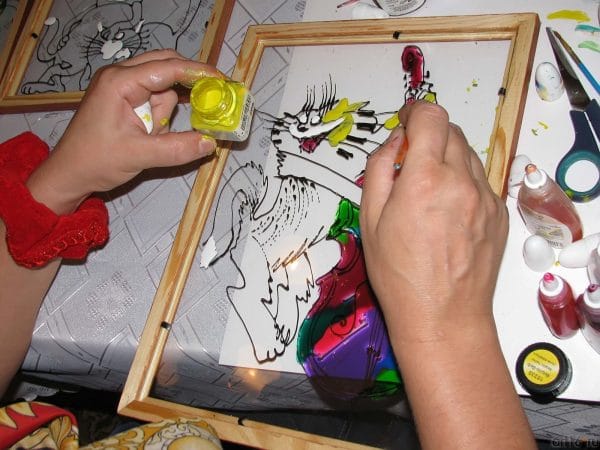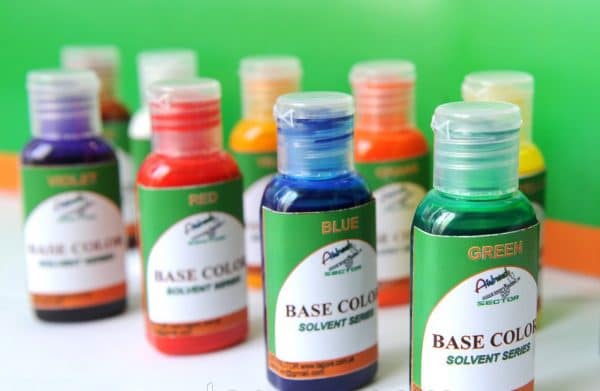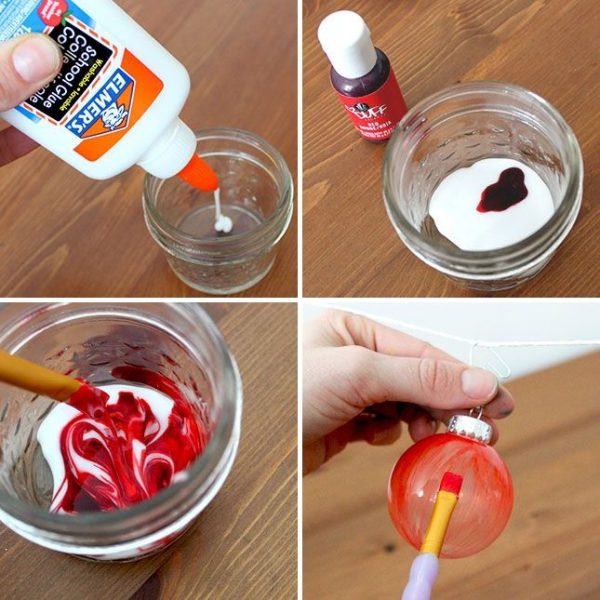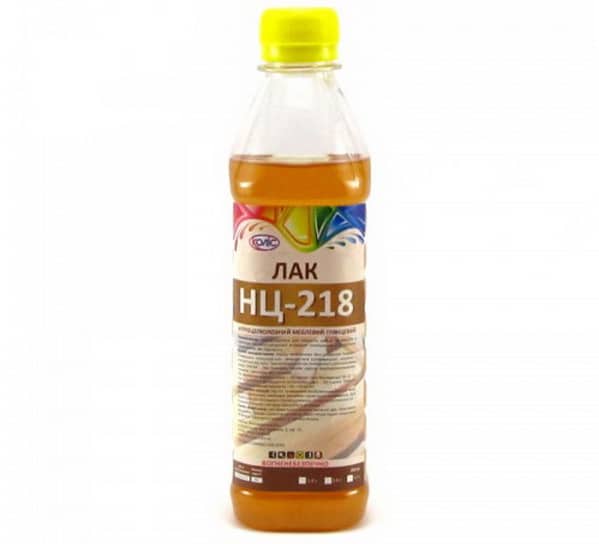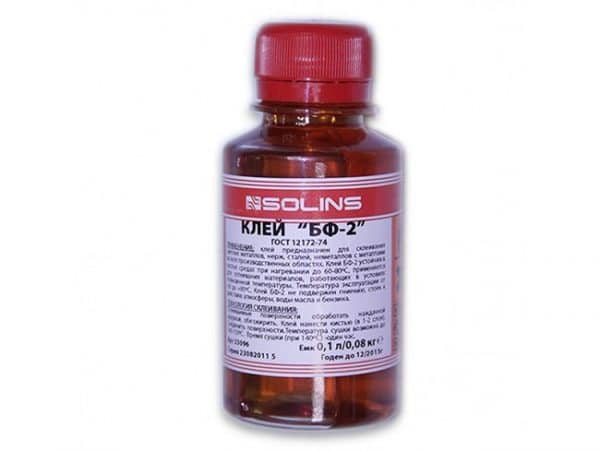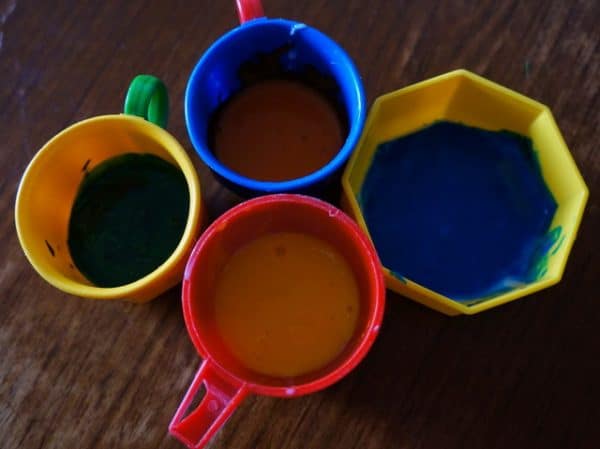Seeing stained glass paintings, many are amazed at the skill of their creator. In fact, the manufacture of such masterpieces is simple, everyone can master the technique. To save money, it is recommended to do stained glass paints with your own hands at home. So a novice will be able to practice drawing without extra costs, because purchased colors are not cheap.
- The use of stained glass paints
- Types of stained glass paints
- The way to create paints from PVA
- Sophisticated recipes for stained glass paints
- On nitro-varnish
- On glue BF-2
- On gelatin
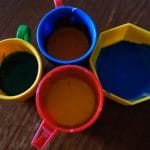
The use of stained glass paints
Glass is an ideal material for creativity and the embodiment of any fantasies. With minimal skills in drawing and artistic taste, you can easily master the technique of painting glass and create an imitation of classic stained-glass windows using special paints. Sometimes this type of creativity is also called a stained-glass window, and it is used even in industrial conditions.
With the help of stained-glass colors, you can transform many things. For example, drawing on glass will help turn ordinary, modest dishes into a work of art. With the help of such means, vases, figurines, and interior objects are painted to give them a certain stylized appearance.
Stained glass technology allows you to restore old products that have already lost their attractiveness, because the beautiful decor will hide all the defects.
After acquiring skills, you can try painting on more serious areas, for example, paint glass doors. More often used stained glass technique for glass, but the materials perfectly fit on other grounds:
- tile;
- tree;
- veneer;
- mirrors;
- films, oilcloths.
to contents ↑
Types of stained glass paints
To draw stained glass, two types of paint are needed: contour and directly stained. Depending on the composition, any two groups of funds are divided into the following types:
- Water (acrylic). Due to the basis of the paint, liquid is easily washed off with water, therefore it requires firing at a temperature of + 150 ... + 170 degrees. Water-based colors are non-toxic, suitable for children's creativity, do not emit a smell, are suitable even for allergy sufferers. They can be used on any surface, after hardening they can tolerate washing with household products.
- Alcohol Liquid but persistent paints do not require firing, as they dry themselves. Look great on smooth bases, looking bright, shiny. Wipe them off the glass with solvents.
- Solvent (varnish, alkyd). These are thick paints that dry for a long time, and after drying give glossy shades. Usually they are used to paint furniture. Too thick agents are diluted with organic solvents, which give them a pungent odor and toxicity. Due to the density of the color, they can hide small surface defects. In childhood, you can not use such paints. When working with them, it is imperative to use personal protective equipment and ventilate the room.
The way to create paints from PVA
You can make stained glass materials yourself, and the cost of their manufacture will be minimal. The easiest way is to prepare paint from PVA glue. Its texture is ideal for applying to any surface, since it is thick and not prone to spreading, it lays in an even layer.
For the preparation of coloring agents, PVA glue and pigment of the selected color will be required. You can take several dyes and spread the glue into disposable cups, “eggs” from “Kinder surprises” or other small dishes. 2-3 teaspoons of glue are added to each container, after which the right amount of pigment is introduced, mixed thoroughly. If the shade is too bright, you can dilute the paint with an additional portion of PVA glue.
As pigments used:
- construction colors
- watercolor;
- gouache;
- paints for fabrics;
- gel pen rods;
- paints for easter eggs;
- food colorings.
In the future, you can mix finished paints with each other, getting different interesting shades. To increase the density of the product, loose eye shadow is introduced into it. Pearlescent shades will help to give stained-glass paint a beautiful gloss. The result of applying the materials will be very interesting: the fact is that, if desired, the picture can be completely removed from the glass and glued like a sticker. If you want to get such an effect, you need to apply paint with a thick layer.
It is also permissible to carry out a drawing on a file (multifore), inside of which it is very convenient to put a stencil. It is clearly visible through the base and allows you to accurately draw details of the future stained glass window. Using a file, you can do stained glass painting even in the absence of artistic skills.
to contents ↑It is important to leave the drawing, applied with home-made paints, until completely dry (about 10-12 hours), and only then stick it to the window, door. To do this, just attach the picture to the glass and smooth it with your hand.
Sophisticated recipes for stained glass paints
PVA-based paints are great for children's creativity. To get a serious result close to professional, it is better to use paints according to other recipes. They give a more stable pattern, which is not subject to deformation and does not deteriorate from the influence of external factors.
On nitro-varnish
You need to buy nitrol varnish and any organic solvent. These funds are mixed in such quantities: 2/3 parts of nitrolac, 1/3 part of the solvent - acetone, white spirit, solvent. Next, the mass is tinted with any pigment, after which the brightness of the paint is adjusted to the desired level by introducing an additional portion of nitro-lacquer or tint. For drawing, the mass is not suitable, but it is suitable for filling stained glass contours.
to contents ↑On glue BF-2
It is necessary to purchase a glue of a light shade, to dilute add a little acetone, then introduce pigment into the composition. For this purpose, only the dye that is soluble in alcohol is suitable, for example, the ink of a regular ballpoint or gel pen.
to contents ↑On gelatin
It is more difficult to prepare such paints, but they will be harmless, children will be able to use them. For the base, you need to dilute 6 g of gelatin in 200 ml of water. In another jar, a dry dye for the fabric is dissolved in a small amount of water, achieving the desired saturation of the tone. Next, the base and the dye are mixed together. It will be necessary to work with paint quickly: it soon freezes. To increase its durability, you can introduce a little nitro varnish into the mass: so the finished stained-glass window will last longer and become brighter, more interesting in appearance.

